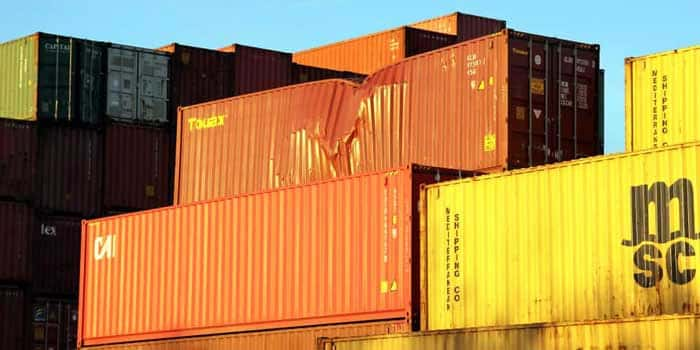Joint Survey of 20’ Leaking Container and Cross Stuffed Into a Sound Container

This is to certify that the undersigned Independent Ship and Marine Surveyors, at the request of cargo underwriter attended a joint survey with the surveyor representing from the Carriers at Container Terminal-2, Jebel Ali, Dubai, in order to attend the alleged leaking 20’container discharged from a vessel to determine the cause, nature and extent of leaking from the container.
Accordingly, a joint survey was scheduled between Constellation Marine Services on behalf of the Cargo Underwriter and Carrier’s Surveyor at Container Terminal-2, Jebel Ali Port, Dubai, UAE.
During discussion, we were informed by the Carrier’s surveyor that the cargo of Leaner Alkyl Sulphonic Acid would be unstuffed from the subject 20’ leaking container and cross-stuffed into a structurally sound 20’ container, which was placed adjacent to the leaking container. The DPW Container Terminal Officials informed us that ‘M/s. Hazmat Solutions LLC’ (the River King Team) will accompany us for cross-stuffing during our joint inspection.
Upon reaching the site, it was noticed that the container was lying at Leaking Container Area of Jebel Ali Terminal – 2 with intact door seal no. (Reportedly installed by the Carrier Surveyor/EHS staff of DPW container Terminal-2) after inspecting the cargo, prior to our appointment.
Our external inspection of the accessible side of container revealed it to be structurally intact, with normal wear and tear. During our close-up inspection of the subject unit the oil-stains noted at the rear door sill end.
Subsequently, the door seal of the subject unit removed in our presence and the door of the container was opened for our inspection and unstuffing the content / cargo. Our inspection of stow 1×20’ container revealed Labsa Ucf Grade 96% (Liear Alkyl Benezene Sulphonic Acid) in plastic drums to be stowed on a wooden pallet, 2 across and 2 tiers high and secured with 2 nylon straps.
The drums stowed on pallets at the door end noted to be in a sound condition with no signs of leakage of contents.
Subsequently with initial preparation by staff of ‘M/s. Hazmat Solutions LLC’, Dubai, the unstuffing of cargo from leaking container commenced. The plastic drums stowed in the wooden pallets were removed by using forklift from the leaking 20’ container MSKU 7338422 and directly stowed into a replacement the sound container, which was placed adjacent to the leaking container. The plastic drums on the pallets were stuffed by using fork-lift into the 20’ structurally sound container 2 across and 2 tiers high, for further sea carriage.
During the course of un-stuffing the plastic drums from leaking container. One plastic drum on the wooden pallet noted to be fully pressed and cracked in the way of its bottom section resulting in leakage of cargo / content from bottom section of the drum. More than 99% of the cargo / content was noted to be spilled out on the floor board. Subsequently, the cracked / damaged drum was placed in a garbage bag by the staff of M/s. ‘Hazmat Solution LLC’ and was re-stowed at upper tier in the 20’ container in our presence.
NATURE OF DAMAGE / LEAKING
As mentioned above one of the plastic drums was noted pressed and cracked resulting leaking of its content. The floor board of the container found partly wet and with oil stain marks. As per incident report/Notice of damage from vessel dated the oil was dripping from container’s internal side & quantity of leak estimated to be of 225 Liters from Container remaining 79 drums were noted to be in a sound condition.
CAUSE OF CONSIDERATION
Our cause considerations are based on an unprejudiced opinion, and relates directly to our observations at the time of the survey and the document available / provided to us. As per incident report/Notice of damage from vessel oil was dripping from container’s internal side & quantity of leak estimated to be of 225 Liters from Container No. MSKU 7338422 and at that time of our inspection there was no damage noticed to the external structure / fittings of the container.
However, the cause of leaking is a crack developed at the bottom side of one of the drums may be due to the pressure / weight of upper tiers, where the alleged damaged plastic drum was stowed at the bottom tier while stuffing in the subject unit.
CONCLUSION
The following was observed during the course of the joint
survey
1- The stain marks of spillage cargo were found / observed
in the floorboard of the subject unit.
2- The entire cargo including the damaged drum was re-stowed
in the a replacement container and was sealed with new seal
number.
The container was ready for transshipment to the final destination port.


